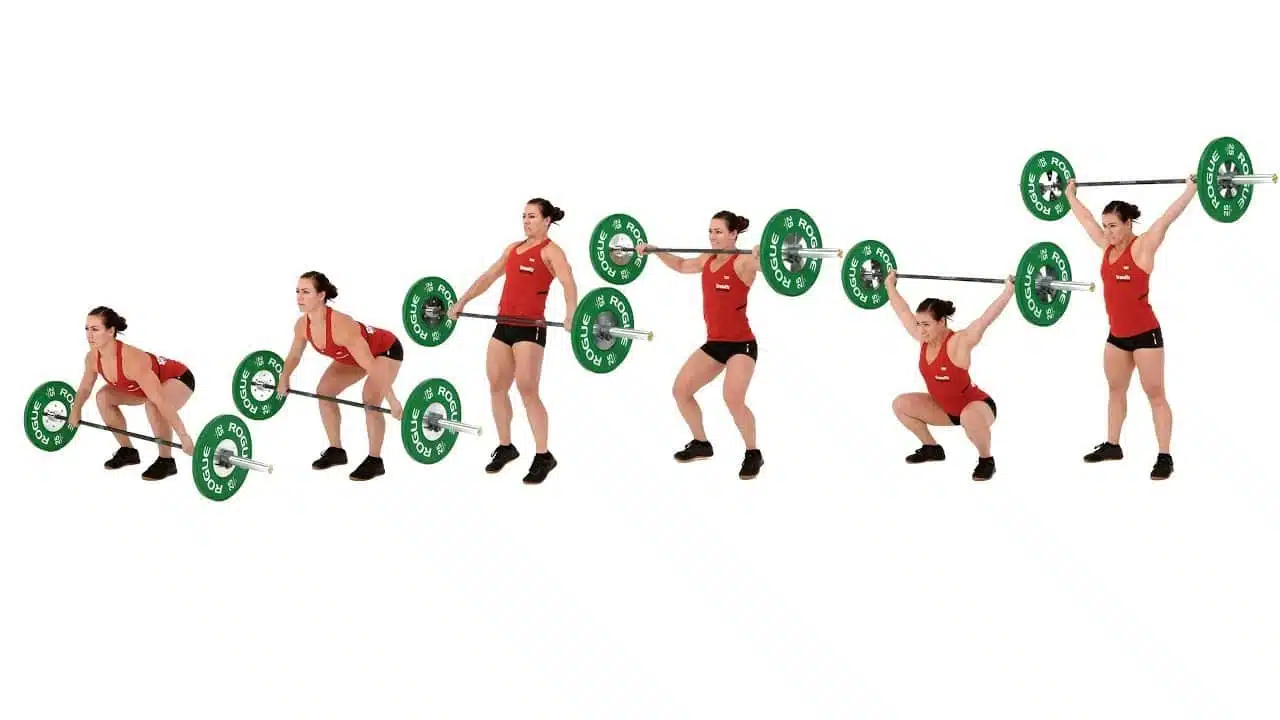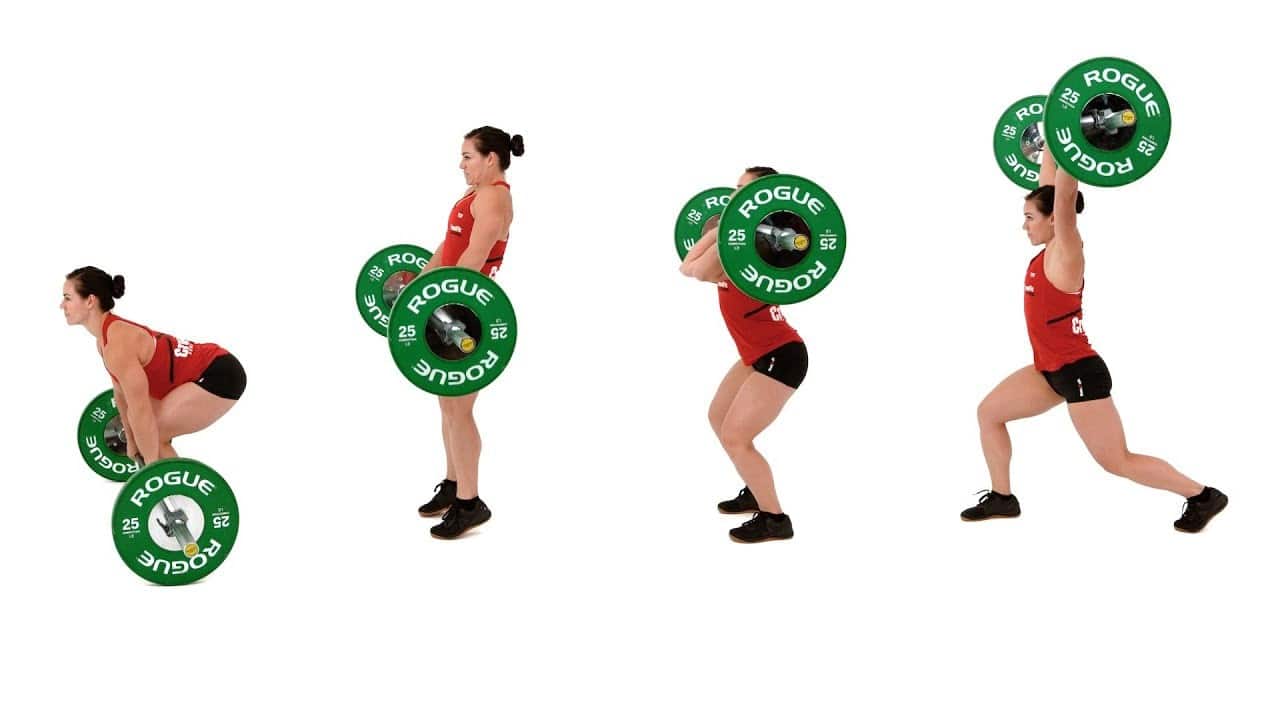17 de March de 2023
The Science Behind the Olympic Lifting. How Coaches Can Use VBT
The Olympic lifting or Olympic lifts are exercises increasingly known by the population. The development of Crossfit or weightlifting has made people who had no idea what a “jerk” was know how to perform a squat, a pull-up or know the “overhead” squat. As we have said, the advancement of Crossfit, a discipline that uses these movements in the vast majority of its workouts, has made the general population practice these movements. However, these exercises are not new and have been practiced for several decades. In fact, it is known that Olympic lifting has been practiced since its introduction at the first Olympic Games in Athens in 1896 (1).
Olympic lifts or movements derived from weightlifting are exercises that not only serve to improve power or neuromuscular performance but are also very useful for improving other parameters related to performance in any team sport (2). Unlike other sports such as powerlifting, Olympic lifts have the characteristic of favoring an improvement in neuromuscular power. If you are not able to lift the load at a high speed, I doubt you can win a competition. As previously discussed, improving on typical weightlifting or Olympic lifting exercises can make an athlete jump higher, run faster or hit the ball harder.
In case anyone is wondering if Olympic lifting serves to increase muscle mass, we must answer that Olympic exercise training does not seek to increase muscle mass but to improve power and performance. However, this does not mean that it is not possible to increase muscle mass, but that this is not the ultimate goal of Olympic lifting. In fact, if we review the literature, we will see that there are multiple ways of generating hypertrophy and that all of them depend on the mechanical tension offered by the load to be overcome, the metabolic stress of the training and the muscle damage itself (3). Therefore, as long as Olympic exercise training meets these three characteristics, muscle hypertrophy will be generated.
What is called an Olympic movement?
When we talk about Olympic movements, we must contextualize that the two main movements are the “Snatch” and the “Clean and Jerk”. Both movements are performed with the Olympic bar, but they differ in the steps involved. The “Snatch” is a movement that involves lifting the bar straight from the ground to overhead in a single movement. On the other hand, the “Clean and Jerk” does the same movement, but in two parts. A first pull is performed until the bar is at shoulder height and from there a second pull is performed until it is above the head. Let’s say that these are the two main movements, but they can be subdivided into different phases and trained separately.


It is important not to confuse Olympic movements with exercises that resemble or copy Olympic movements. For example, seeing that in an Olympic movement a squat is performed, we could say that the squat is an Olympic movement, but we would be making a serious mistake. In fact, it has been shown that the difference between a traditional squat and an Olympic movement is the peak power it generates. Previous studies have reported that when we perform an Olympic movement the power is 4 to 5 times higher than the power obtained when performing a traditional squat or deadlift squat exercise (4, 5).
Therefore, we should not confuse exercises that resemble those performed in Olympic lifting with the Olympic lifts themselves. In fact, a good way to differentiate them is by measuring power, a variable that can be measured through the Vitruve device.
Necessities for the correct performance of Olympic lifts
Olympic lifts require a series of characteristics in order to be performed in the safest possible way and reduce the risk of injury. As we have said, there are new trends in the sport that are using these exercises as the basis of their training programs, but we must not forget that the Olympic movements are complex and require a very good technique. The first thing to work on when introducing Olympic movements in our training is technique and precision. For this, the first training sessions oriented to the Olympic lifts will seek to improve the ranges of motion, mobility of wrists, shoulders and hips in order to perform a fluid movement and to control the times of each lift.
Two qualities that we must improve and that will improve on their own when we perform Olympic lifts will be muscular strength and power. In fact, if we monitor the lifts, thanks to the Vitruve application, we will notice that over a month of training the execution velocities of the Olympic movements will be increased. This means that the application of force has been improved. In addition, at the beginning, we should put more emphasis on improving technique and speed of execution, while later on we will add more kilos to the bar to find the best relationship between strength application and muscular power.
Finally, we must refer to one of the most important training principles for physical preparation: adaptability. It is crucial that our athletes adapt to the loads we impose as coaches. It is strange, but on this principle lies all the weight of a good or bad preparation. The training load can fall short or it can be excessive. If, for example, we use a load that is not sufficiently training the athlete’s progress will be slow and may not even progress. On the contrary, if we overdo it with the training load, the athlete may get injured because he/she is not able to adapt to the load. Therefore, adaptation in our athletes is key and as coaches we must know the best progression to achieve a good adaptation.
How can velocity training help Olympic movements?
As we have advanced in the previous sections, one of the tools to evaluate the improvement in an Olympic movement is the power with which the load is moved. For this, the Vitruve device has several measurement variables such as the velocity of execution and the applied power. If we take into account physics itself, we know that power is equal to force times acceleration (P = F x a), i.e., if we increase the speed at which the load moves, we increase the acceleration and therefore increase the power. In the same way, if we increase the applied force, we will also increase the power. As we have been saying, velocity-based training (VBT) can help us to measure our power progress in each of the exercises mentioned. For example, the application itself allows us to measure the “Clean” and “Snatch“. But it also allows us to select movements such as deadlift, deadlift sumo, military press, bench press, front squat or normal squat.
On the other hand, if there is an exercise that does not appear in the Vitruve list that we would like to perform, we can select the “All” exercise and save it. We have different ways to use the Vitruve device. First of all, we can take a measurement before starting any training system we have planned and see how the athlete is doing from the beginning. We can apply one or two mesocycles and after some time re-evaluate the selected exercises to see if the athlete has improved. But we can also measure progress with each workout. The Vitruve device allows us to obtain for each repetition the applied power and the execution velocity. If the power falls below X we could finish the series, or the same would be done with the execution velocity. In fact, one way to train with a device like Vitruve is to plan the loss of velocity-performance. In this way, if we decide to stop the series when we have lost 20% of the velocity at which the load is moving, the device warns us that we have moved the load below that velocity and the series is terminated.
What is the science behind Olympic lifting?
Today we can say that the scientific evidence behind Olympic lifting has grown in recent years. Advances in sports science have led to the use of tools that allow much better control of the technical gesture and the application of forces. In fact, what used to be considered a “good” technique (emphasizing that there is no such thing as a good technique per se, only an effective technique) may not be so today. The difference? In the past, the Olympic lifting expert, usually a former competitor or a coach with several victories behind him, was the one who subjectively said whether a technique was good or not. However, today with 3D photogrammetry or mobile applications it is possible to detect whether the bar is moving as it should or not. That is to say, people who have become experts in biomechanics and who control certain technological tools are capable of making very good training programs that improve power or speed of execution.
And Vitruve is one of these technologies since, as we have mentioned, it allows us to control the velocity of execution and the power applied in each of the movements discussed throughout this article.
Conclusion
To conclude and as we always to do in all our blog posts, we will highlight the important points of this entry. First, we must emphasize that the Olympic movements and exercises derived from weightlifting have taken great prominence in the planning of any personal trainer. Certain fitness trends have promoted the population to be familiar with a “Jerk” or a “Clean“. This fact can be both good and bad. It is good because it encourages the general population to exercise and it is bad because if it is not done with good supervision, it can be harmful.
On the other hand, we will always recommend the use of applications or tools that allow us to objectify the progress of training and athletes. In this way, we will have a correct evaluation and progress of our athletes. In this case, the training based on velocity, thanks to devices like Vitruve, offers us information not only of the velocity itself but also of the power, which as we have mentioned throughout the entry, is a key parameter when we talk about the Olympic lifting. Offering tools to improve the evaluation and control of the load will lead to improved performance. Do not hesitate to use Vitruve to evaluate your progress and your training.
Unai Adrián Pérez de Arrilucea Le Floc’h
References
1.Lee HM. The Ancient Olympic Games: Origin, Evolution, Revolution. Classical Bulletin. 1998;74(2):129.
2.Hackett D, Davies T, Soomro N, Halaki M. Olympic weightlifting training improves vertical jump height in sportspeople: a systematic review with meta-analysis. British journal of sports medicine. 2016;50(14):865-72.
3.Schoenfeld BJ, Grgic J, Ogborn D, Krieger JW. Strength and hypertrophy adaptations between low-vs. high-load resistance training: a systematic review and meta-analysis. The Journal of Strength & Conditioning Research. 2017;31(12):3508-23.
4.Channell BT, Barfield J. Effect of Olympic and traditional resistance training on vertical jump improvement in high school boys. The Journal of Strength & Conditioning Research. 2008;22(5):1522-7.
5.Hedrick A, Anderson JC. The vertical jump: A review of the literature and a team case study. Strength & Conditioning Journal. 1996;18(1):7-12.

